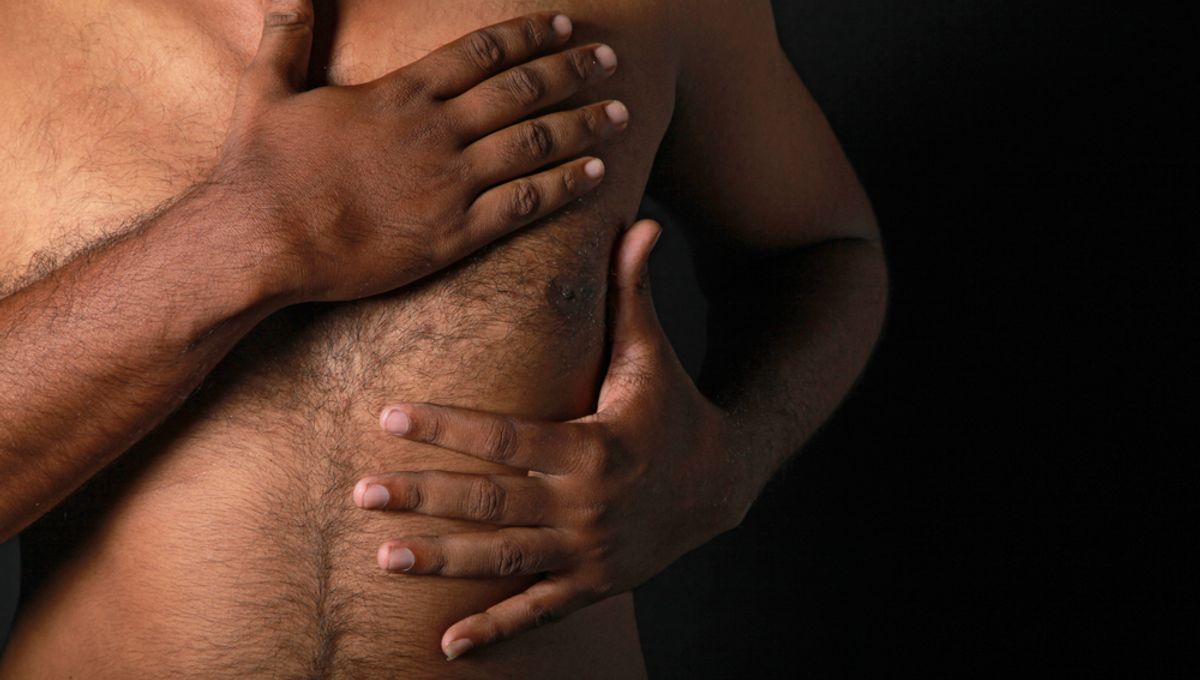
Breast cancer is often thought of as a “female” disease – but that’s not the case. Moobs, a new organization launched in the UK, aims to challenge these preconceptions, raising awareness of male breast cancer and providing support to those diagnosed.
Breast cancer can affect anyone
Although males might not have “boobs” in the typical sense, they still have breast tissue and that means they can still get breast cancer. It might be much rarer, accounting for around 0.5 to 1 percent of breast cancer occurrences worldwide, but that doesn’t mean that it doesn’t happen or that it’s any less serious when it does. In 2023, it’s predicted that around 2,800 men in the US will be diagnosed with breast cancer, and 530 of those are estimated to die.
Founded by James Richards, who was diagnosed with breast cancer in February this year, Moobs was launched with three key missions: educate those diagnosed with male breast cancer about the disease, provide them with support, and change the way we perceive breast cancer in wider society.
“As a male, I’ve always been aware of the risks of prostate and testicular cancer, but I had no idea men were able to get breast cancer – you just don’t hear of it,” said Richards, speaking to The Independent.
“In the days following my diagnosis, I was surprised by the lack of tailored support and information readily available around the disease, and much of my treatment plan was based on what was offered to women.”
“There are differences, but with so few cases and a lack of funding for male breast cancer, we are in danger of isolating those that need support the most.”
Mission possible
The organization is already achieving part of its mission, running a monthly support meeting via Zoom to bring together people diagnosed with the disease and reduce the isolation that can come with it.
It also enlisted the help of UK television’s Dr Amir Khan and Dr Zoe Williams during its launch, bringing its quest to a much wider audience and some helpful advice.
Talking to the PA news agency, Khan said, “I always say to women, be ‘breast aware’ – so that’s knowing what’s normal for you, and then being aware of any changes and getting them checked, and it’s exactly the same for men.”
Symptoms to look out for can include:
- a lump in the breast tissue that is typically firm, painless, and immobile within the breast
- inversion of the nipple or upward turning
- nipple discharge, including bleeding
- persistent soreness or rash around the nipple
- presence of small swollen bumps in the armpit (lymph nodes)
Khan noted that most of the breast tissue in males is found around the nipple, so people should pay particular attention to that, but also check the whole chest area, up to the collarbone and under the armpits.
Being breast-aware can also mean having an idea of any family history of breast cancer, particularly if it involved mutated BRCA genes, or medical conditions or treatments that increase estrogen levels (a risk factor for breast cancer). As with many cancers, male breast cancer tends to affect older people the most, but it can still occur in younger people too.
As for how often you should check your pecs, Khan recommends once a month. “Just as often as you check your balls for any lumps, you should be checking your breasts as well. Do them both – balls and breasts – in the shower, once a month.”
If you do find something, it’s recommended to see your GP for reassurance and/or referral.
“It’s always better to be safe than sorry, and the longer you leave it [if it is cancer], sadly, the worse the outcome is likely to be,” said Khan.
“So as soon as you pick anything up, go and see someone.”
The content of this article is not intended to be a substitute for professional medical advice, diagnosis, or treatment. Always seek the advice of qualified health providers with questions you may have regarding medical conditions.
Source Link: New Male Breast Cancer Organization Wants You To Join The Moobment